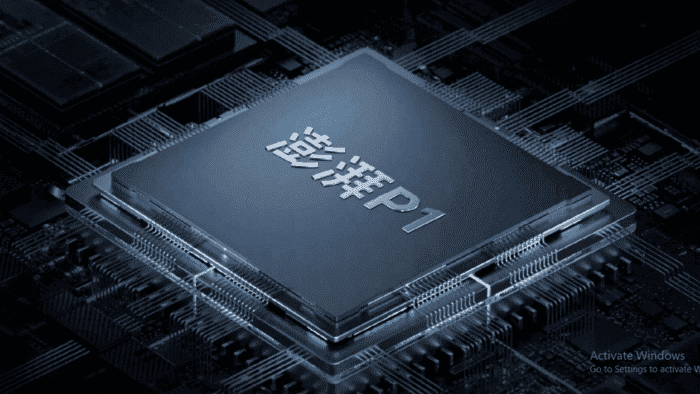At the Xiaomi 12 series launch event earlier today, the Chinese manufacturer also released its third self-developed chip. The company calls this chip Surge P1. Xiaomi’s first self-developed SoC is the Surge S1 which was released in 2017 and mounted on Xiaomi Mi 5C. Its second self-developed chip is an ISP chip, Surge C1 launched earlier this year with the Xiaomi Mi MIX FOLD. Xiaomi Chairman and CEO, Lei Jun, said that Xiaomi 12 Pro comes with the Surge P1.
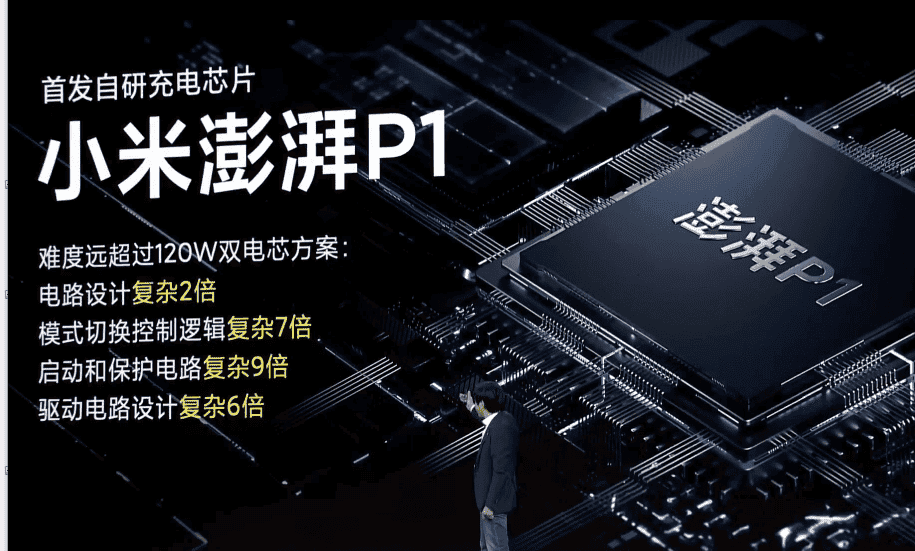
According to him, after 18 months of research and development, the chip has achieved a 120W single-cell solution. He claims that this is far more difficult to achieve than the 120W dual-cell solution. The circuit design is twice as complicated, the mode switching control logic is 7 times more complicated. Furthermore, the startup and protection circuits are 9 times more complicated. In addition, the drive circuit design is 6 times more complex.
Lei Jun said that with the support of this chip, the 4600 mAh battery can be fully charged with 100% power in the fastest mode in 18 minutes.
Xiaomi said that in the past single-cell fast-charging system, to convert the 20V voltage input to the mobile phone into a 5V voltage that can be charged into the battery, a series-parallel circuit of 5 different charge pumps is required. Moreover, a large number of charge pumps and an overall series-connected architecture will generate a lot of heat. In actual use, it is impossible to achieve full-power operation for a long time. It is hard to achieve a 120W high-power fast charging.
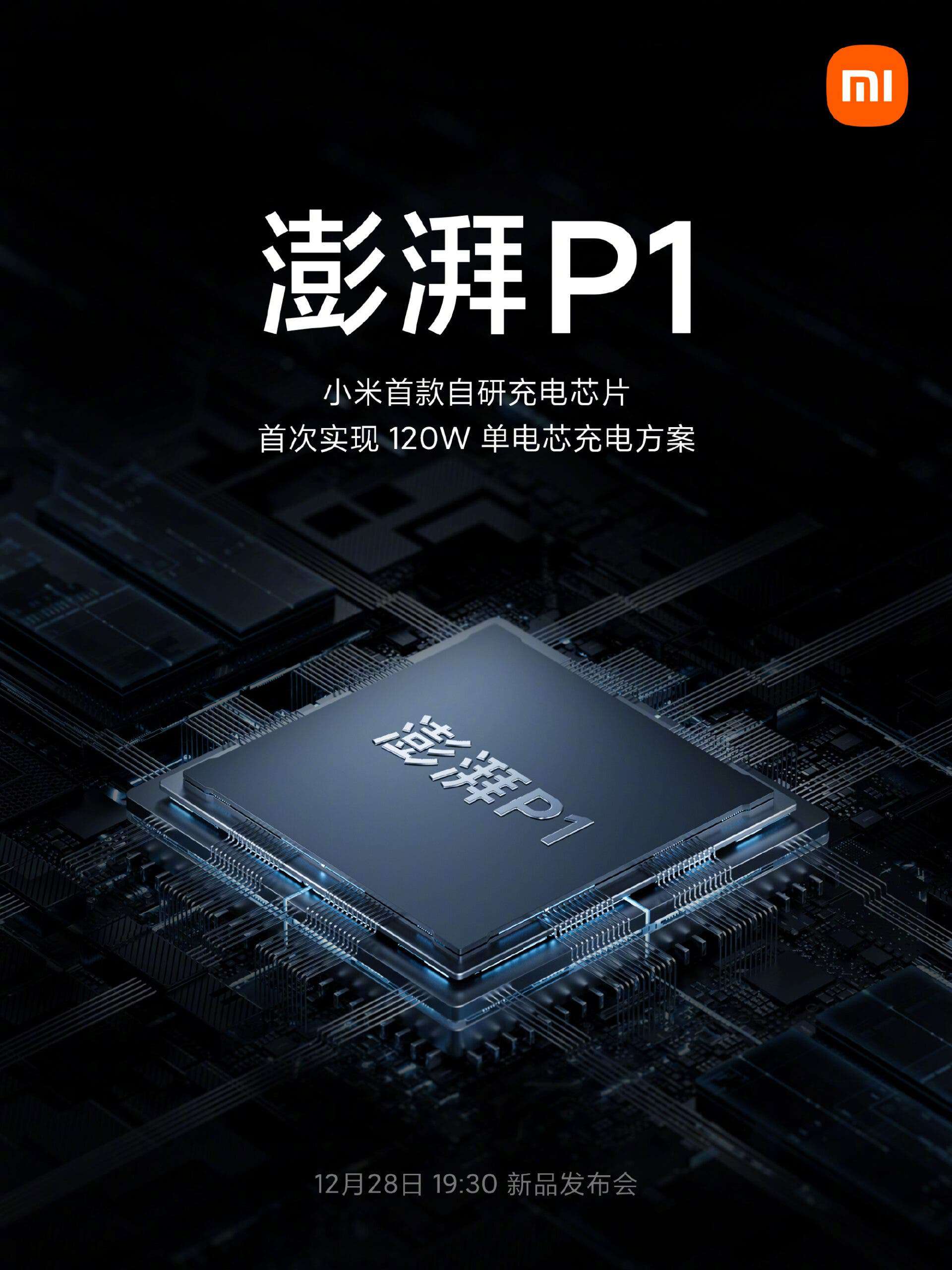
To solve this problem and reach a 120W fast charging, Xiaomi has developed two smart charging chips and put them into the Surge P1. This two take over the complex structure of the traditional 5 charge pump. They convert the high-voltage power input to the mobile phone into a large current that can be directly charged to the battery more efficiently.
Surge P1 Advantages
Xiaomi said that as the industry’s first resonant charging chip, the Surge P1 has a 4:1 ultra-high efficiency architecture with adaptive switching frequency. The efficiency of the resonant topology is as high as 97.5%; the efficiency of the non-resonant topology is 96.8%; the heat loss has plummeted by 30%.
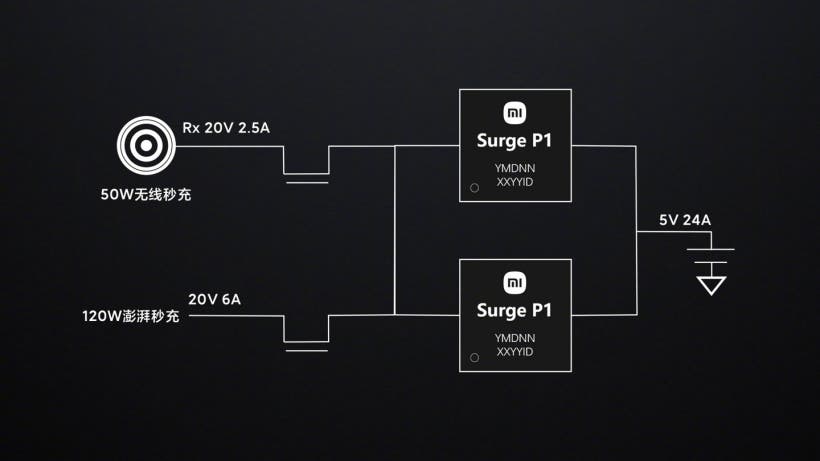
The Surge P1 itself undertakes a lot of conversion work. Traditional charge pumps only need two working modes (transformation, pass-through). But the Surge P1 needs to support 1:1, 2:1, and 4:1 conversion modes. All modes need to support bidirectional conduction. This means that it needs a total of 15 permutations and combinations of mode switching control. This is 7 times that of traditional charge pumps. The forward 1:1 mode makes the bright screen charging more efficient; the forward 2:1 mode is compatible with more chargers; and the forward 4:1 can support 120W charging; the reverse 1:2/1:4 mode is available.
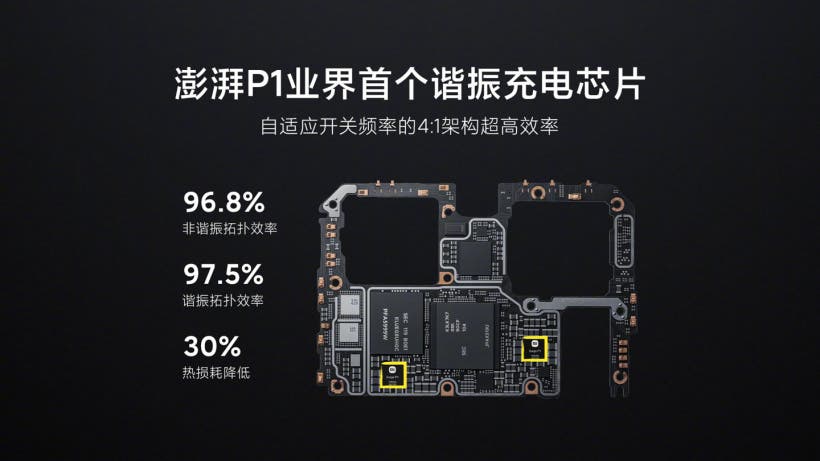
According to Xiaomi, the Surge P1 is also Xiaomi’s highest charging efficiency 4:1 charging chip. It can achieve an ultra-high power density of 0.83W / mm². Also, LDMOS has reached the industry’s leading ultra-low 1.18mΩmm² RSP.
The Surge P1 chip needs three different FLY capacitors with different voltage resistance. Each capacitor needs an independent open and short circuit protection circuit. Also, each operating mode needs to strictly control the pre-charge voltage. The number of power tubes is close to two of the traditional charge pumps. Because of the increase in topology design and functional complexity, each Surge P1 chip needs to pass more than 2500 tests before leaving the factory. This is much higher than the traditional charge pump.

